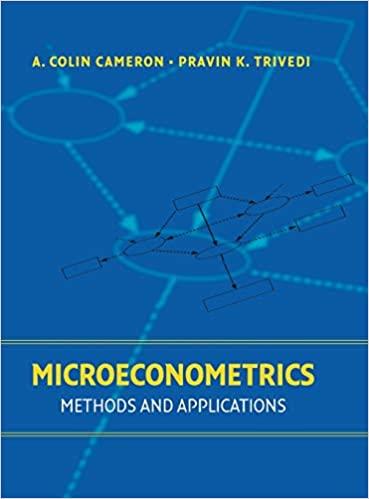Using a 50% random subsample of the RAND data on medical expenditure over a 12-month period used
Question:
Using a 50% random subsample of the RAND data on medical expenditure over a 12-month period used in this chapter, and using a similar model specification, we wish to consider the following broad question: Which model is appropriate for modeling the expenditure data?
(a) Using the data summary of the expenditure variable, analyze the implications of the high proportion of zero expenditures observed. Is this a violation of the normality assumption? Is there a transformation of expenditure that would make the assumption of normality more appropriate?
(b) Three candidate models are considered, each with the same set of covariates. These covariates are the same as in the count data Exercise 20.6. The models are (i) the Tobit model, (ii) the two-part ("hurdle") model (TPM), and (iii) the selection model. Explain how each one of these will be set up, the relationship and connections among them, and how one might compare and choose among them. If you are likely to encounter any specific specifications or estimation problems, state them and suggest how you might handle them. Pay attention to the choice of exclusion restrictions.
(c) Estimate in turn the Tobit model, the TPM, and the selection models. For the TPM you have two equations, and the second is for those who have positive expenditures only. In the case of the selection model, use both the MLE and the two-step (Heckman) estimators. Discuss your reasons underlying the exclusion restriction required in the estimation of the selection model. Is there evidence that the selection problem is a serious issue?
(d) How can we compare the statistical fit of the three models? Which model appears to provide the best fit to the data? By what criterion?
(e) Suppose our main interest is in the impact of two variables on expenditure, income, and of ( coinsurance rate). Use the results of your estimated Tobit model and TPM to make a comparison between the marginal impact of a change in these variables on expenditure. Given that there is considerable heterogeneity in the sample, suggest how to present the results of your analysis in the most informative manner.
(f) Briefly explain how quantile regression (see Section 4.6) provides an alternative method of analyzing the same data. What are the main advantages and disadvantages of this approach in the present data situation?
Step by Step Answer:

Microeconometrics Methods And Applications
ISBN: 9780521848053
1st Edition
Authors: A.Colin Cameron, Pravin K. Trivedi






